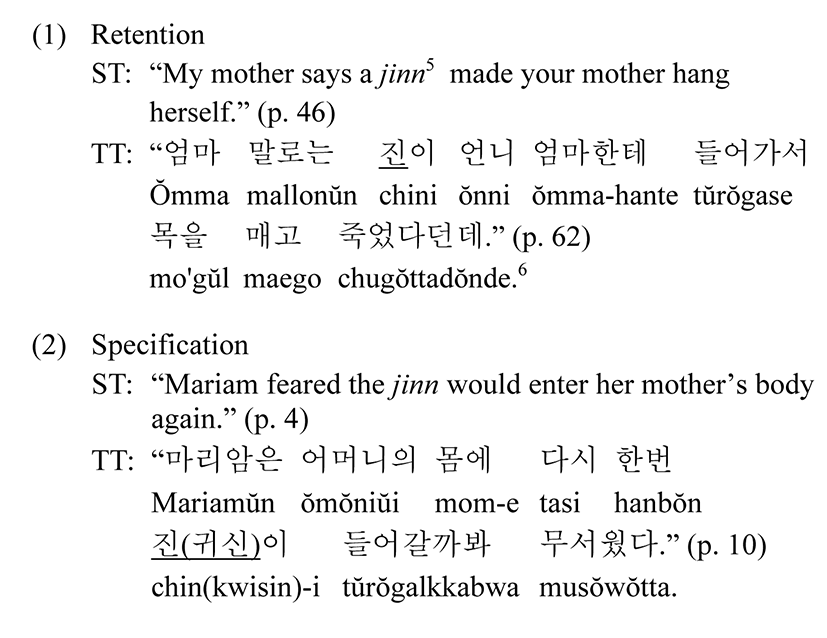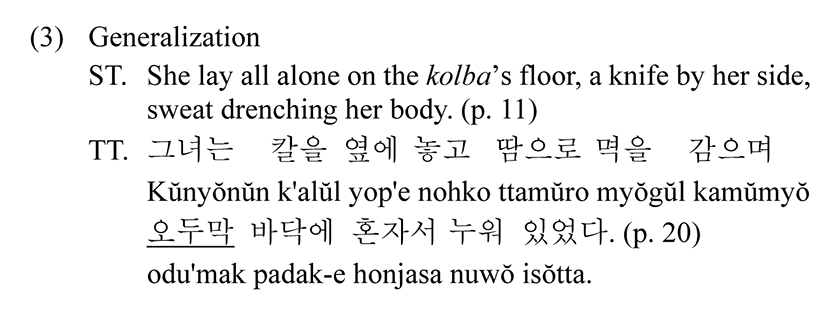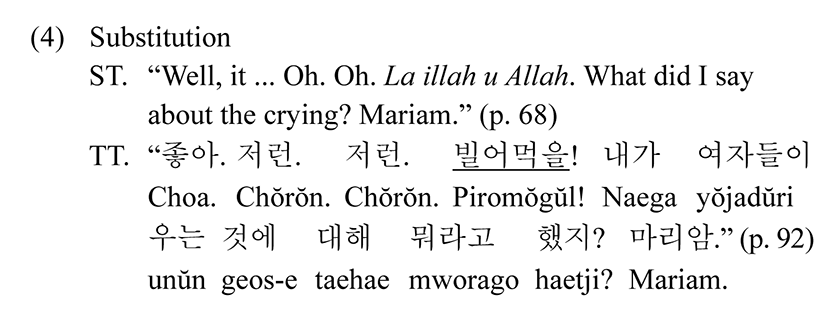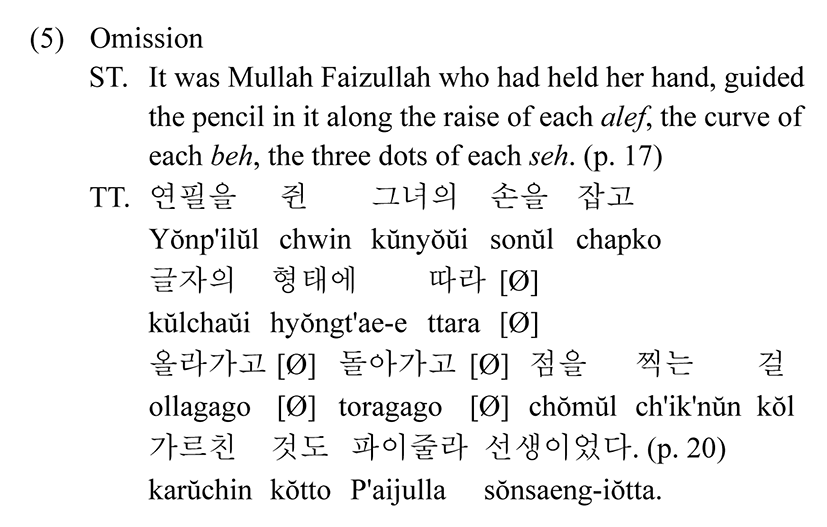1. Introduction
One of the most significant features of world literature is multilingualism, which has been increasingly prominent due to influences such as post-colonialism, globalization, mass media, and immigration. Literary multilingualism1 serves as a visual marker of cultural exchange between individuals or groups (Knauth 2009: 58). It is defined as the use of two or more languages within a single literary work, in contrast to the concept of national literature, where a work is composed in only one language (Rossich 2018: 49). In the real world, multilingualism has positive aspects such as promoting reciprocity, diversity, and inclusivity. However, it can also lead to issues such as linguistic imperialism, inequality, and exclusion due to cultural barriers (Chin 2023, Park 2023). Authors often reflect these aspects in their works through multilingual writing, capturing the complexities and interactions that emerge from the exchange of different languages.
From the perspective of translation, literary multilingualism offers an interesting discussion. Traditionally, translation has been understood as the process of converting the source language (SL) of the source text into the target language (TL). However, when translating Tolstoy’s War and Peace—written primarily in Russian, with about two percent in French (Morson 1987)—into English, how should the French text in the original be handled?
Bellos (2008) introduces the concept of L3 to refer to a foreign language used in the source text (ST) and raises the issue of translating L3 into the target text (TT).2 In this framework, the main language of the source text is defined as L1, the main language of the target text as L2, and the foreign language used in the source text as L3.3 If L3 is left unchanged in the TL, it ceases to be a translation; if it is translated into L2, the literary effect of L3 is lost. The function of literary multilingualism encompasses pragmatic, aesthetic, and ethical dimensions (Knauth 2009: 41), and it is appropriate to view it as a literary device aimed at achieving rhetorical effects (Rossich 2018: 50).
Broadly, there are two extreme strategies of L3 translation: one is to leave the L3 words untranslated, thereby revealing them in the TL, and the opposite extreme is to translate the L3 words into the target language, thereby eliminating their presence. In practice, translations usually strike a compromise somewhere between these two extremes.
The idea for this paper originates from Haroon and Daud’s research (2017) on the Malay translation of A Thousand Splendid Suns. This novel, written by an Afghan-American author, portrays the tumultuous lives of two Afghan women and includes Dari and Pashto words despite being an English novel. The researchers analyzed how the L3 words were translated in the Malay version and found that approximately 70% of the L3 words remained untranslated. This result is understandable. Firstly, Malaysia is a multiethnic and multilingual country where Malay, English, Chinese, and Tamil are commonly used, suggesting a high tolerance for intercultural and linguistic diversity. Additionally, the novel’s touching narrative about three Afghan women and the familiarity of Dari and Pashto words to Malaysian readers, who are part of the Islamic cultural sphere, make it easier to retain L3 elements in the translation.
How, then, were the L3 words in this novel translated into the Korean version? The cultural context of South Korea differs significantly from that of Malaysia. South Korea has a single ethnic identity and a lower tolerance for Islamic culture, which might lead to different translation strategies compared to the Malay version. This paper adopts the methodology of Haroon and Daud (2017) to analyze how the L3 words are translated into the Korean version and to compare the findings with theirs. The aim of this comparison is to describe the differences or similarities in translation strategies of L3 and to derive implications regarding the target culture’s attitude towards multilingual literature.
2. Literature Review
Published in 2007, A Thousand Splendid Suns is Khaled Hosseini’s second novel, which immediately made waves and remained on the New York Times bestseller list for 103 weeks. Set against the backdrop of Afghanistan’s tumultuous modern history, the story follows the poignant fates of two women and explores themes of self-sacrifice and love, ultimately leading to redemption. The narrative has deeply resonated with many readers. Hosseini, originally from Afghanistan, is one of the writers who pursue diaspora literature. While writing novels in English, he incorporates Dari and Pashto vocabulary to reflect his cultural roots. In Hosseini’s works, human relationships play a significant role, and the characters are portrayed objectively, depicting Afghanistan and the Afghan diaspora (Ruzmatova 2019: 70).
Through immigrant writers like Hosseini, readers in the English-speaking world are exposed to cultural minorities in the mainstream literature (Cavagnoli 2014: 165).
Awan and Ali (2012) analyzed the use of L3 in this work, identifying nine methods: (1) glossing, (2) untranslated words, (3) code-switching, (4) syntactic fusion, (5) lexical innovation, (6) translation equivalence, (7) contextual, (8) indigenous metonymy, and (9) indigenous discourse markers. The effective blend of methods (1) through (5), which directly present foreign words, is particularly noted for fostering interest and sympathy among English-speaking readers, promoting cross-cultural understanding and empathy for diverse cultures.
In their 2017 study, Haroon and Daud examined how Dari and Pashto words in the English novel were translated into the Malay version. The researchers identified 174 Dari and Pashto words used in the ST and examined how these words were translated into Malay. The methodology used was based on Pedersen’s (2005) taxonomy. Originally, Pedersen’s taxonomy was developed to provide guidelines for translating an extralinguistic culture-bound reference (ECR)4 encountered in subtitling. Haroon and Daud applied Pedersen’s cultural translation taxonomy framework to the L3 translation, grounding their approach on Ashcroft et al.’s (2002) argument that foreign words convey cultural aspects (Haroon & Daud 2017: 168).
According to this, Haroon and Daud outline six strategies for translating L3 words: (1) retention, (2) specification, (3) direct translation, (4) generalization, (5) substitution, and (6) omission. The first three strategies preserve the feel of the foreign language in the original text and are considered source-oriented, while the latter three prioritize the readability of the translation and are considered target-oriented.
The analysis of the Malay translation revealed the following distribution, as summarized in Table 1 below.
| Translation Procedure | No. of Foreign Words | % |
|---|---|---|
| Retention | 119 | 51 |
| Specification | 46 | 20 |
| Direct Translation | 0 | 0 |
| Generalization | 2 | 1 |
| Substitution | 59 | 26 |
| Omission | 5 | 2 |
| Total | 231 | 100 |
Adapted from Haroon and Daud (2017: 176) with CC-BY.
The analysis showed that retention (51%) and specification (20%) were most used in the Malay translation version, indicating a predominance of source-oriented strategies. The researchers noted, however, that the specification strategy, while involving the use of foreign (L3) words, includes explanatory additions, which can be considered a target-oriented strategy. Thus, they concluded that the translation strategy employed in this Malay version could be described as balanced.
3. Methodology and Analysis
In this study, the translation strategies are classified by comparing how the L3 words in A Thousand Splendid Suns (Hosseini 2007a) were rendered in the Korean version (Hosseini 2007b). For this purpose, the methodology proposed by Pedersen (2005) was employed, which was also applied by Haroon and Daud (2017). To ensure clarity and facilitate future analysis, a more detailed explanation of the methodology applied by Haroon and Daud (2017) is provided. Strategies for translating L3 words are broadly categorized into source-oriented and target-oriented approaches. Source-oriented strategies aim to highlight the literary effect of L3 and include (1) retention, (2) specification, and (3) direct translation. Retention involves preserving the cultural elements present in the ST within the TT. In this paper, it is considered to leave the L3 words untranslated and intact within the TT. L3 is represented in the TT in two ways: by maintaining the original spelling or by using a phonetic transcription, either in the Roman alphabet or in the script of the target language. The advantage of using a phonetic transcription in the target language script is that it allows readers to experience cultural nuances through pronunciation. Specification involves retaining the L3 words in the TT and providing additional explanations. This can be achieved through methods such as explicitation or addition. Explicitation entails inserting explanations near the L3 term to clarify its meaning within the text. Addition involves the translator providing an explanation of the L3 term’s meaning either in parentheses immediately following the term or in a footnote. Lastly, direct translation involves the literal translation of each word in an L3 phrase, particularly when the phrase consists of more than two words, thereby intentionally creating an unconventional expression. This method is often used for translating proper nouns of institutions or official titles (Pedersen 2005: 5). While L3 words may not be directly rendered, the aim is to replicate the literary effect intended by the ST through non-standard expressions in the target language.
Target-oriented strategies aim to produce a natural and easily readable translation for the target audience. These strategies include (4) generalization, (5) substitution, and (6) omission. Generalization involves replacing an L3 term with a more general L2 term, often resulting in the loss of the cultural nuance specific to the L3 and a tendency towards standardization. Substitution entails removing the cultural reference of the L3 and replacing it with a different cultural reference, which can be achieved through cultural substitution or paraphrasing. Omission involves removing the L3 element entirely in the TT. While this strategy facilitates the understanding of the original context by eliminating foreign elements, it also removes the distinctive cultural specificity that the L3 contributed to the ST (Sebotsa 2016: 114).
To analyze the translation strategies for L3 words in the ST, a collection of L3 terms in the ST was gathered, resulting in a total of 174 distinct words. These words appeared 448 times throughout the novel. It was observed that the same word was sometimes translated by different strategies. To quantify the distribution of translation strategies, the analysis was based on the total occurrences of foreign words in the ST. The details of how these foreign words were translated into Korean are presented in Table 2.
Referring to Table 2, the ST-oriented translation strategies are examined first. The most frequently used strategy is retention, where L3 words were not translated but retained in their original form, accounting for 35.7% of the cases. This method was used 160 times and involved 47 different words. In these instances, L3 words were transliterated into Korean characters. The next most common strategy was specification, which involved adding parentheses alongside the L3 expressions. This approach was employed 95 times, representing 21.2% of the cases and involving 94 distinct words. In contrast, the direct translation to maintain their exotic feel was not used at all.
Examples of the application of the retention and specification strategies are provided below.
For the retention strategy, as seen in (1), the L3 word “jinn” is transliterated into Korean “진” without any additional explanation. For the specification strategy, as illustrated in (2), the L3 word “jinn” is transliterated into Korean “진,” followed by the meaning of the word in parentheses such as “귀신” (ghost).
The Korean translation demonstrates a pattern involving retention and specification. Specifically, when any L3 word first appears, the specification strategy is used, providing both transliteration and an explanation such as “진(귀신)” in (2). For subsequent appearances of the same word, the retention strategy is employed, providing only the transliteration, such as “진” in (1). This pattern is consistently applied to most L3 expressions that appear more than once.
Turning to the TT-oriented translation strategies, generalization was used in 22.8% of cases, omission in 20.1%, and substitution in 0.2%. The generalization strategy involves replacing the L3 words with a more general Korean expression, as demonstrated in (3).
Example (3) illustrates the use of the generalization strategy in translating the L3 word “kolba.” In the TT, ‘kolba’ has been translated as “오두막” (odu'mak), meaning ‘hut.’ Since there is no equivalent term for the traditional Afghan dwelling ‘kolba’ in Korean, it was translated to the Korean word ‘오두막,’ which denotes a small and modest living space. The L3 expressions in the ST generally pertain to cultural references such as traditional food, dwellings, clothing, and religion, making it difficult to find direct equivalents in the target language. Therefore, the generalization translation strategy appears to have been employed to enhance the readability of the translation. However, as the L3 word is removed in the TT, Korean readers may find it challenging to imagine its unique cultural connotations.
The substitution strategy involves replacing an L3 word in the ST with an L2 expression that has a similar cultural reference, and it includes two methods: cultural substitution and paraphrasing.
Example (4) involves a situation where Mariam bursts into tears, and her husband, annoyed and angry, exclaims, “La illah u Allah.” While the literal translation of this phrase is ‘There is no deity other than Allah,’ it does not carry a propositional meaning in this context. Instead, it conveys the husband’s negative attitude, serving an expressive function. Expressive meaning refers to the use of a word or phrase to convey the speaker’s emotions or attitudes without affecting the truth conditions of the statement (Chin & Kwak 2013: 35; for more details, see Cruise 1986: 265–285). A literal translation would fail to capture the contextual meaning and function of the phrase. Therefore, the Korean translation employed a cultural substitution strategy, rendering it as “빌어먹을” (Piromŏgŭl), a common Korean expletive, to preserve the original expressive meaning. This substitution strategy was used only once in the Korean translation.
Another TT-oriented strategy frequently employed, similar in frequency to generalization, is omission. This strategy involves completely removing the expression from the translation, as illustrated below.
In (5), the terms “alef,” “beh,” and “seh” refer to Persian letters, which are unfamiliar to Korean readers. In the TT, instead of presenting these letters in Persian or providing an explanation, the translator opted to omit them entirely.
In summary, when examining the translation strategies used in the TT, source-oriented strategies were employed 56.9% of the time, while target-oriented strategies accounted for 43.1%. This indicates a slightly higher preference for source-oriented strategies in the translation.
4. Discussion
This study aimed to examine how L3 words used in the ST are translated into the TL, specifically focusing on the Korean translation of the English novel A Thousand Splendid Suns, which includes Dari and Pashto words. By comparing the translation strategies employed in the Malay and Korean versions, interesting similarities and differences are observed.
One notable similarity is the preference for source-oriented translation strategies that preserve the exotic feel of the L3 words. In literary translation, there is a general tendency to retain exotic elements, such as cultural items or foreign words (L3), from the ST in the TL (Oster & Molés-Cases 2016, Kaloh Vid 2017, Kargozari et al. 2017, Amiri & Tabrizi 2018, Marco 2019, Gheorghiu 2020, Zhu et al. 2022). However, the inclination to preserve these elements can vary depending on the target culture.
In the Malay version, the strategies of retention and specification account for 71% of the translation choices, while in the Korean version, they comprise 56.9%. Neither version employed the direct translation strategy.
However, the handling of TT-oriented translation strategies differs between the two versions. In the Malay version, substitution was the dominant strategy, accounting for 26% of the translations. In contrast, the Korean version showed an almost equal usage of generalization (22.9%) and omission (20.1%). These differences highlight varying approaches in the treatment of L3 words, with the Malay translation leaning towards maintaining cultural nuances through substitution, while the Korean translation balanced simplifying and omitting L3 terms.
Based on these results, two inferences can be made. Firstly, the cultural diversity of the target language community may influence the translation of L3 elements. Malaysia is a multi-ethnic and multilingual country, where languages such as Malay, Chinese, English, and Tamil are commonly used. This exposure to a multilingual environment in daily life, coupled with a low illiteracy rate and a young readership (KPIPA 2021), may have led to the natural acceptance of source-oriented translation strategies. However, since the study by Haroon and Daud (2017) only examines a single work, it remains unclear whether maintaining multilingual characteristics is a common practice in the broader translation culture.
South Korea, on the other hand, is a largely homogenous society with a single language and strong cultural cohesion, traditionally rooted in Confucian values. However, due to rapid industrialization and democratization, it has become a society highly responsive to change. The relatively high frequency of translation strategies that preserve the multilingual nature of the original text might be attributed to a strong openness to other cultures within the literary field. Korea engages in active exchanges with other countries and has a well-developed translation literature industry, facilitating continuous translation from various countries. South Korea’s publishing industry is highly competitive, and its readership is diverse. There is also a significant intellectual curiosity about world literature, leading to a strong interest in the translation of multilingual literature. Ongoing research in this field (Song 2013, Seon 2015, Kim 2016, Han & Choe 2017) shows a growing preference for and recognition of the necessity of translation strategies that reveal multilingual characteristics (Won & Chin 2020: 135–136).
Secondly, the choice of ST-oriented translation strategies that highlight the multilingual nature of a literary work may be related to the affinity between the L3 included in the ST and L2 (the target language). In the case of A Thousand Splendid Suns, several characteristics of the original work might have influenced the choice of source-oriented translation strategies. Firstly, the story is set in Afghanistan. Since Malaysia is also part of the Islamic cultural sphere, there may be less resistance to the Islamic culture represented through Dari and Pashto in the novel. It is also noteworthy that the substitution strategy is frequently used in the Malay version. Haroon and Daud (2017: 173) explain that some Dari words used in the original text have already been incorporated into the Malay vocabulary. Due to its long and complex history, Malay has developed a variety of loanwords from languages such as Sanskrit, Persian, Arabic, Portuguese, and Chinese. Shared vocabulary from the Islamic cultural sphere can be found in Malay as loanwords, allowing some Dari and Pashto terms to be replaced with Malay equivalents. For example, the foreign word “tasbeh” in the ST is replaced with the Arabic loanword “tasbih,” which already exists in Malay (Haroon & Daud 2017: 173). This partly explains the high frequency of the substitution strategy in the Malay translation. Since loan words are essentially foreign words rewritten in the local script, this translation strategy also has characteristics of the retention strategy. Given the target readers’ familiarity with Islamic culture, it can be inferred that the source-oriented translation strategies were predominantly used without compromising the translation’s acceptability.
In contrast, South Korea has had limited interaction with the Islamic cultural sphere, resulting in a lower linguistic affinity or relevance between the two cultures. Consequently, while the Korean translation often conveys the exotic feel of foreign expressions, it also places significant importance on the target audience’s comprehensibility. When a word is first introduced, the Korean translation typically employs the specification strategy, providing an explanation alongside the transliterated term to ensure that readers can fully understand its meaning. Only then, the retention strategy is used. In cases where cultural differences are substantial, making accurate translation challenging, generalization or omission is frequently used. This approach results in a higher proportion of generalization and omission in the Korean translation compared to the Malay one.
5. Conclusion
This paper examined the translation strategies employed in the Korean and Malay translations of A Thousand Splendid Suns, focusing on how foreign (L3) words from the original text were rendered in each version. The analysis reveals that cultural and linguistic familiarity with the source material significantly influences the chosen translation approaches. The Malay translation’s tendency towards source-oriented strategies, including a high use of retention and substitution, can be attributed to Malaysia’s diverse linguistic landscape and familiarity with Islamic culture. This cultural affinity allowed the translator to retain the original’s exotic elements without hindering comprehension, as these elements were already somewhat integrated into the Malay linguistic environment.
Conversely, the Korean translation demonstrated a more balanced approach between source-oriented and target-oriented strategies, reflecting Korea’s more homogenous linguistic and cultural background. The frequent use of specification and subsequent retention strategies indicates an effort to familiarize Korean readers with L3 words before adopting a simpler transliteration approach. The notable use of generalization and omission strategies in the Korean version also underscores the translator’s focus on clarity and accessibility for readers less familiar with Islamic cultural references. These findings suggest that the translators’ choices are deeply influenced by the target audience’s cultural context, leading to varied but contextually appropriate methods of handling multilingual elements in literature.










